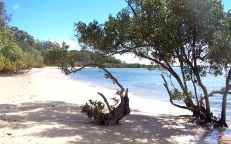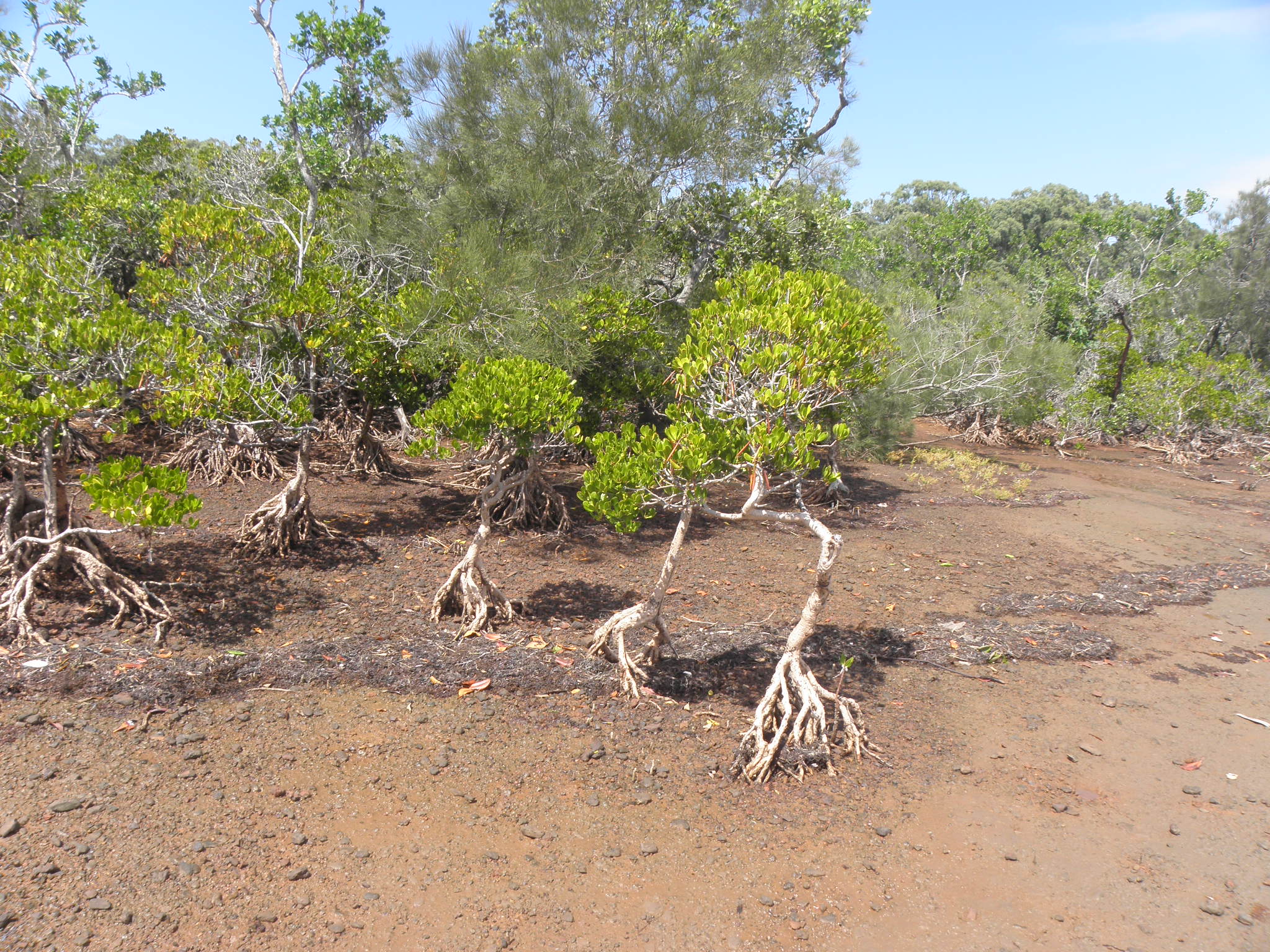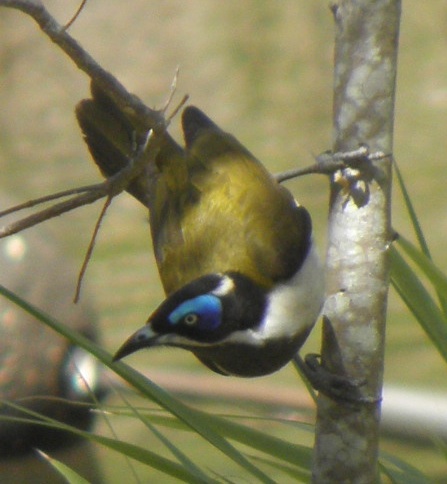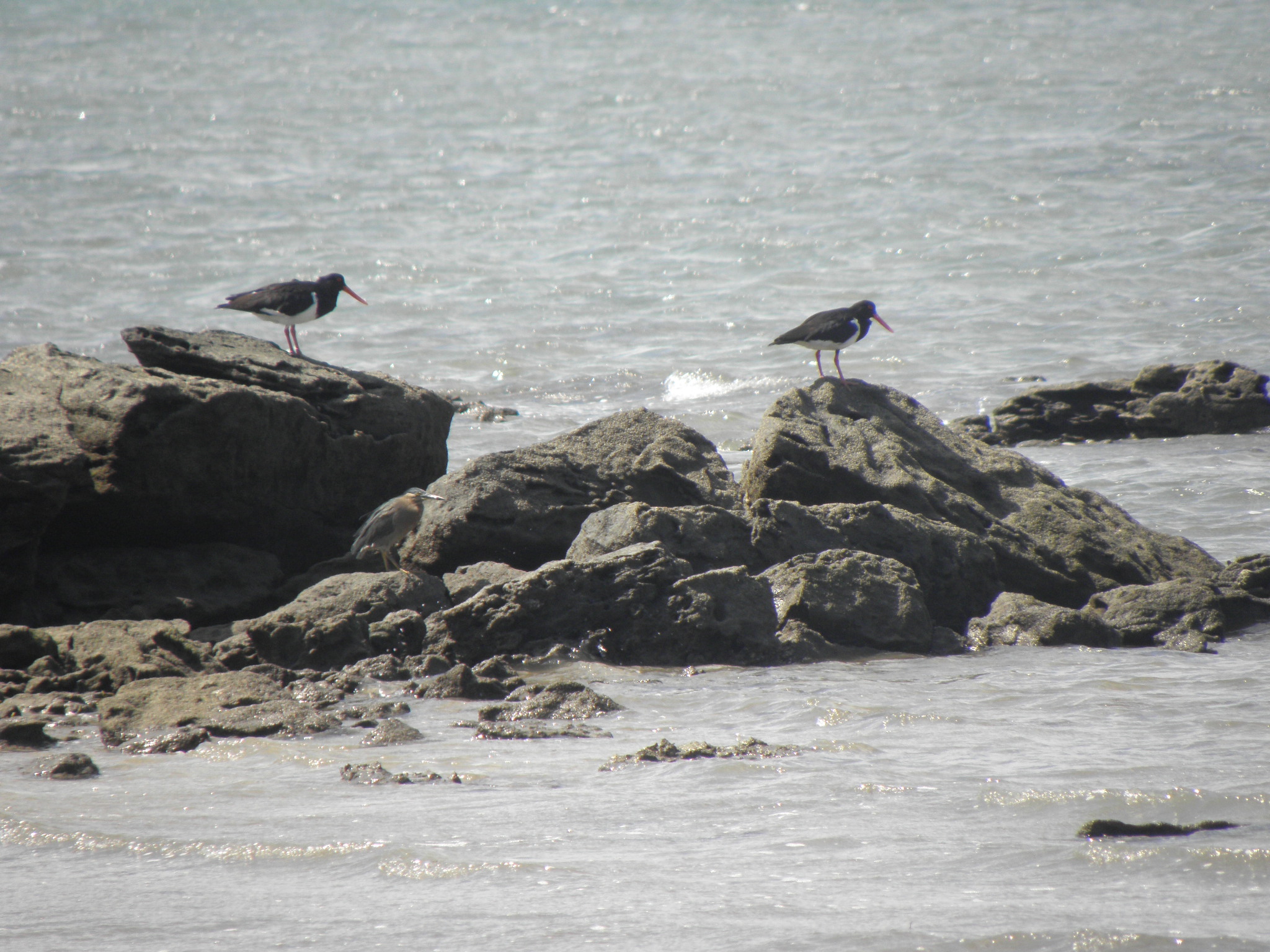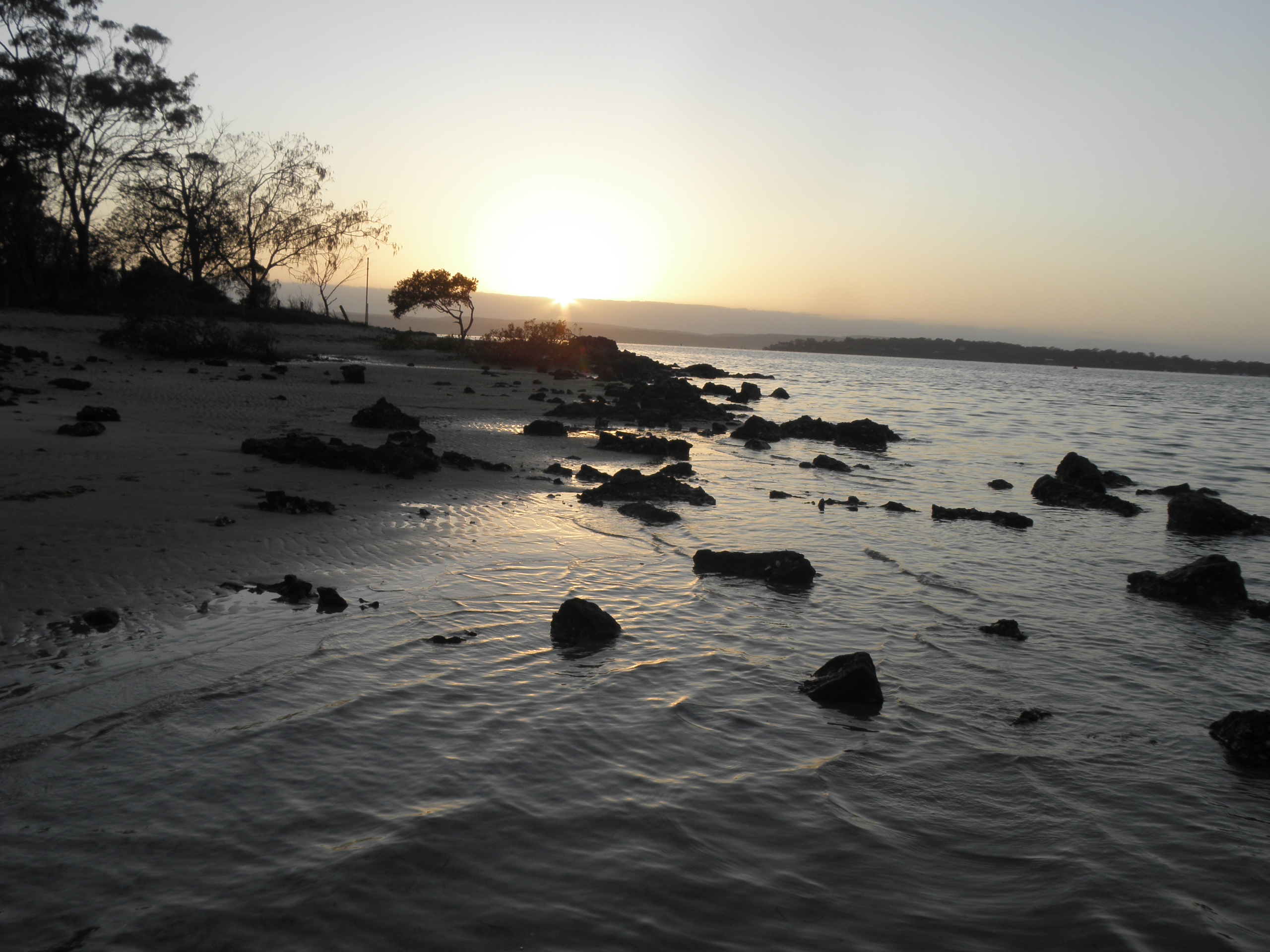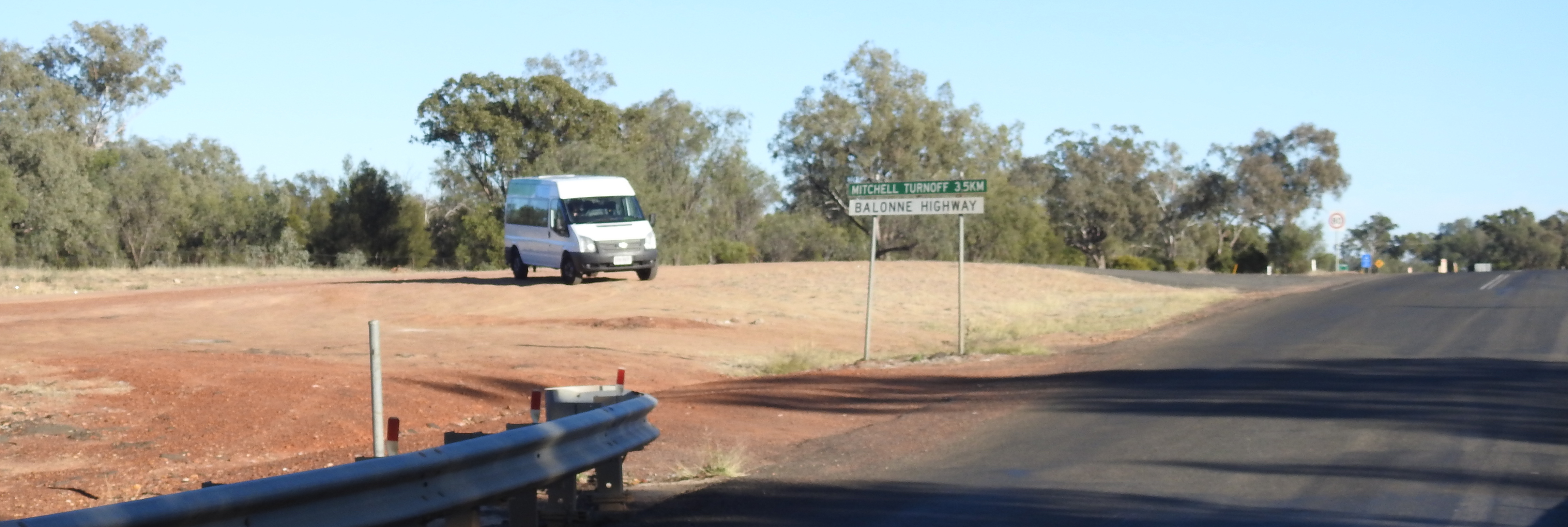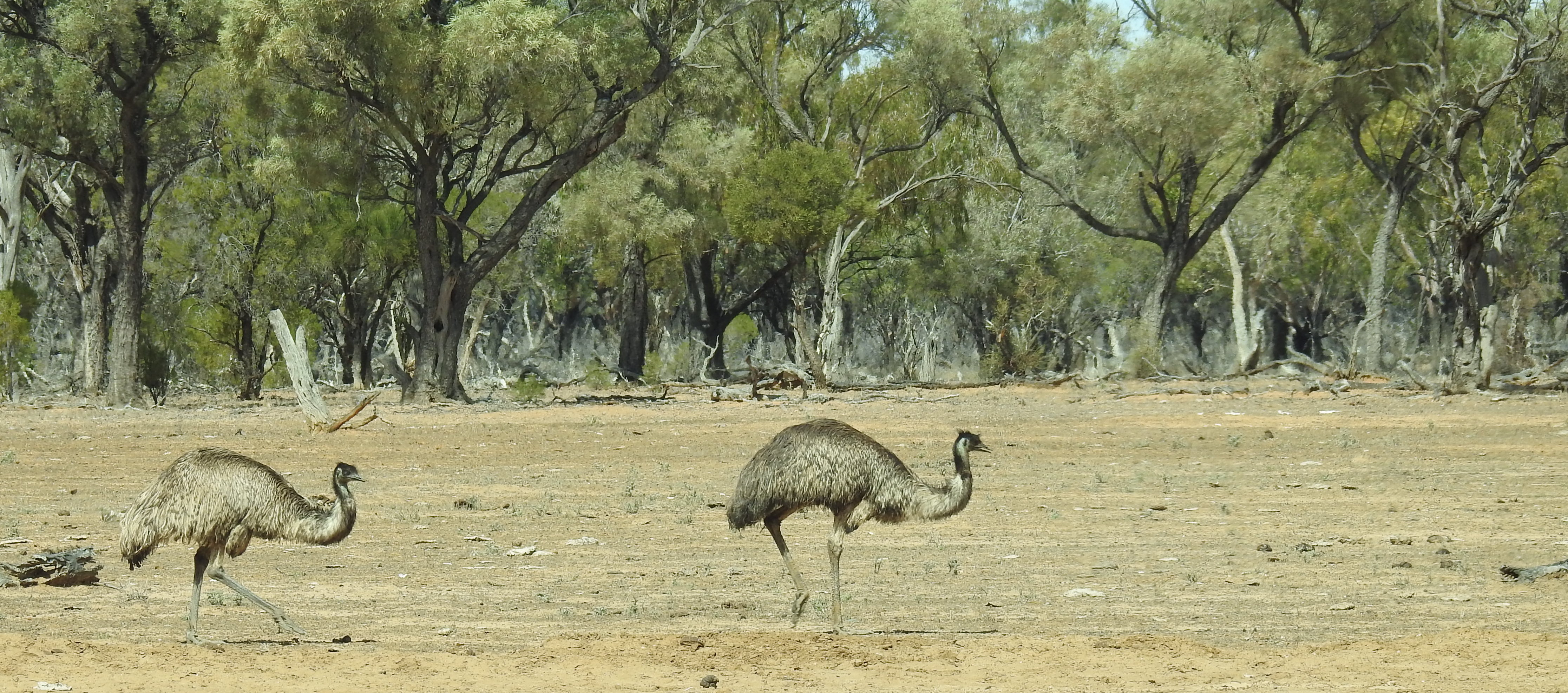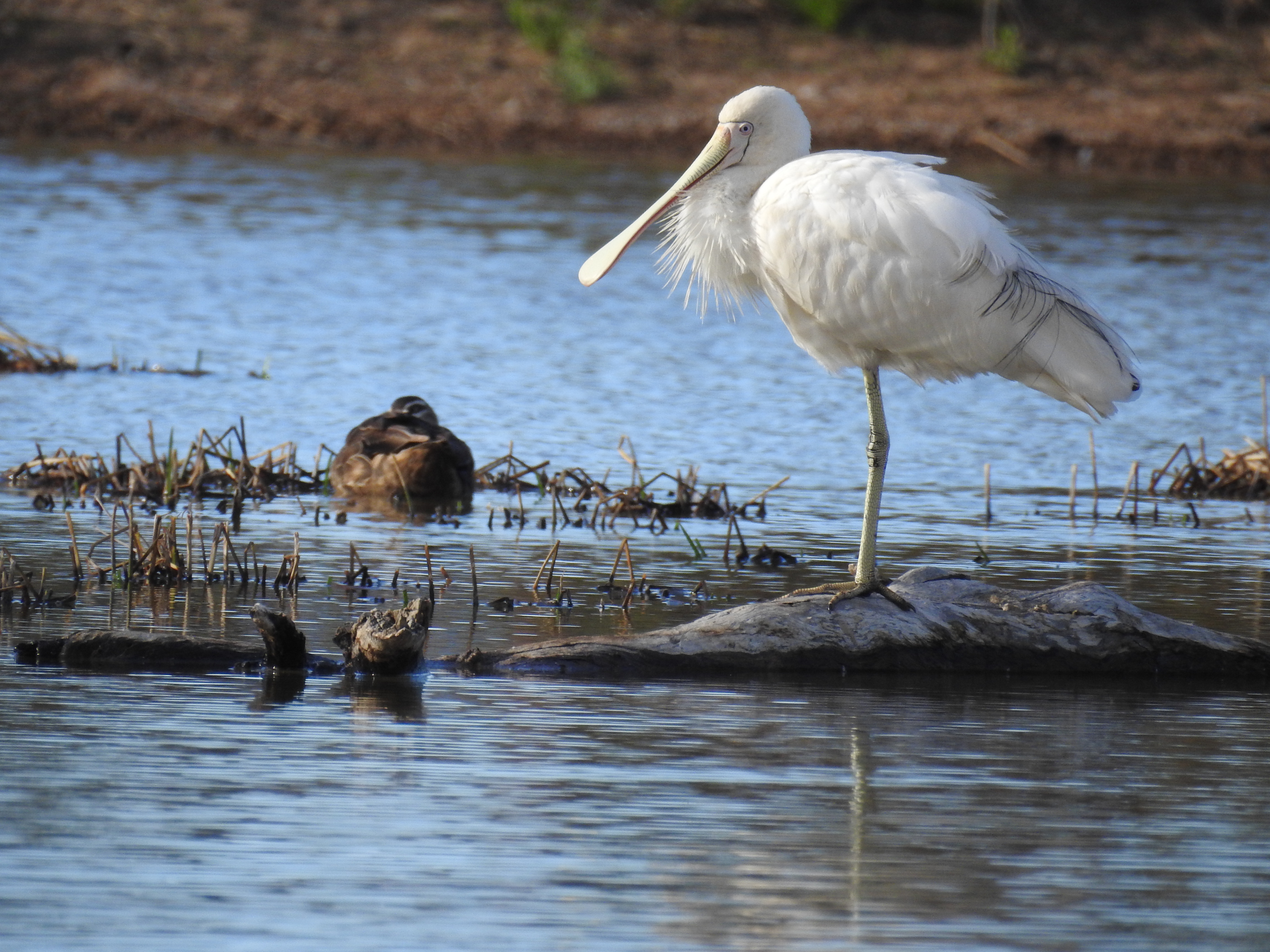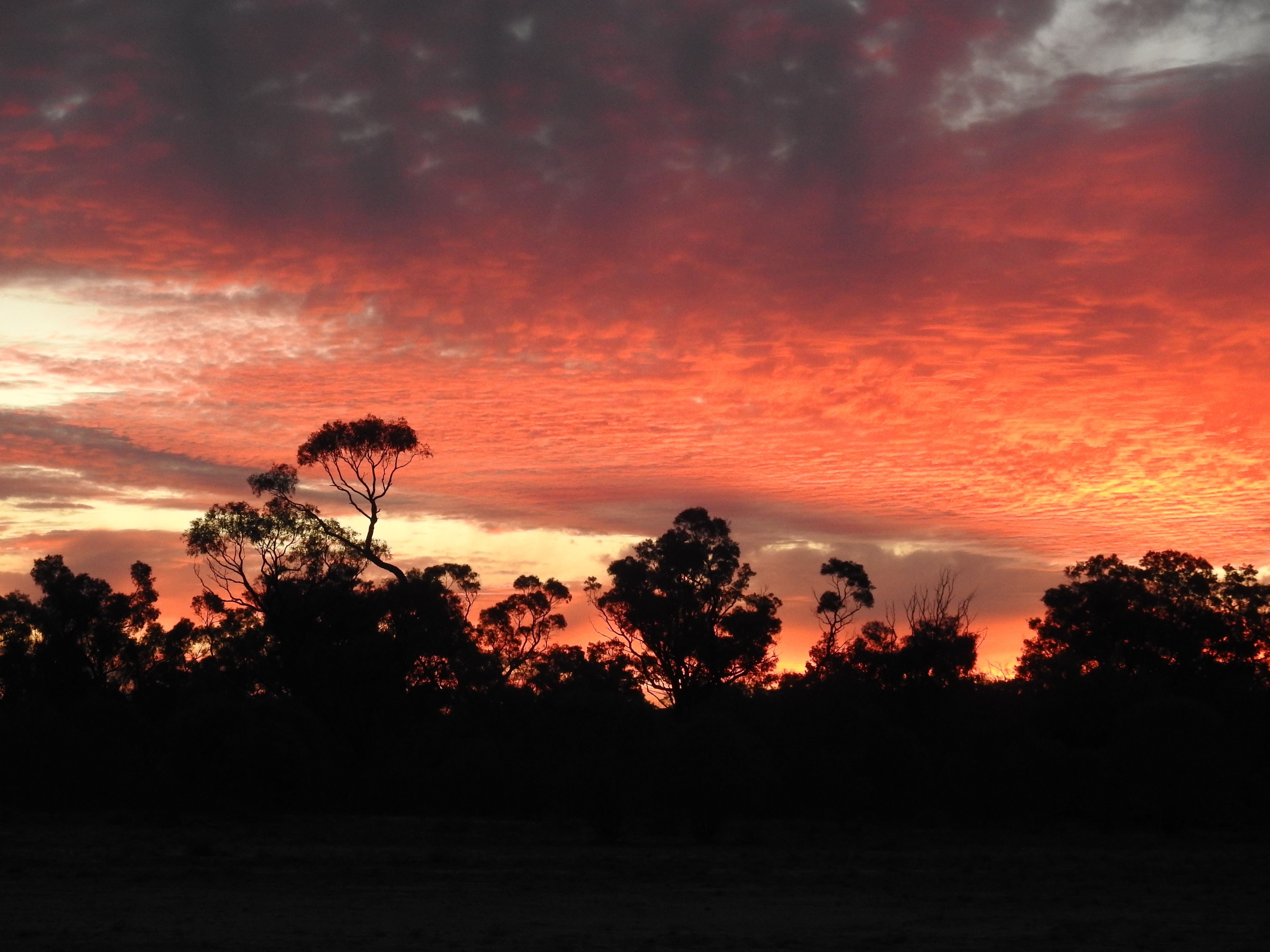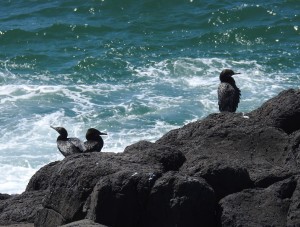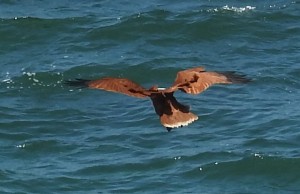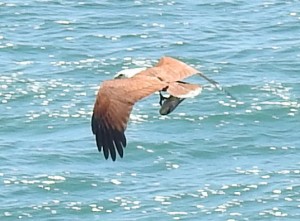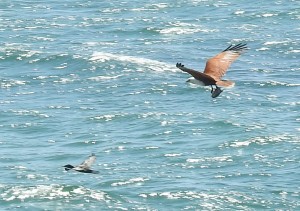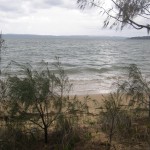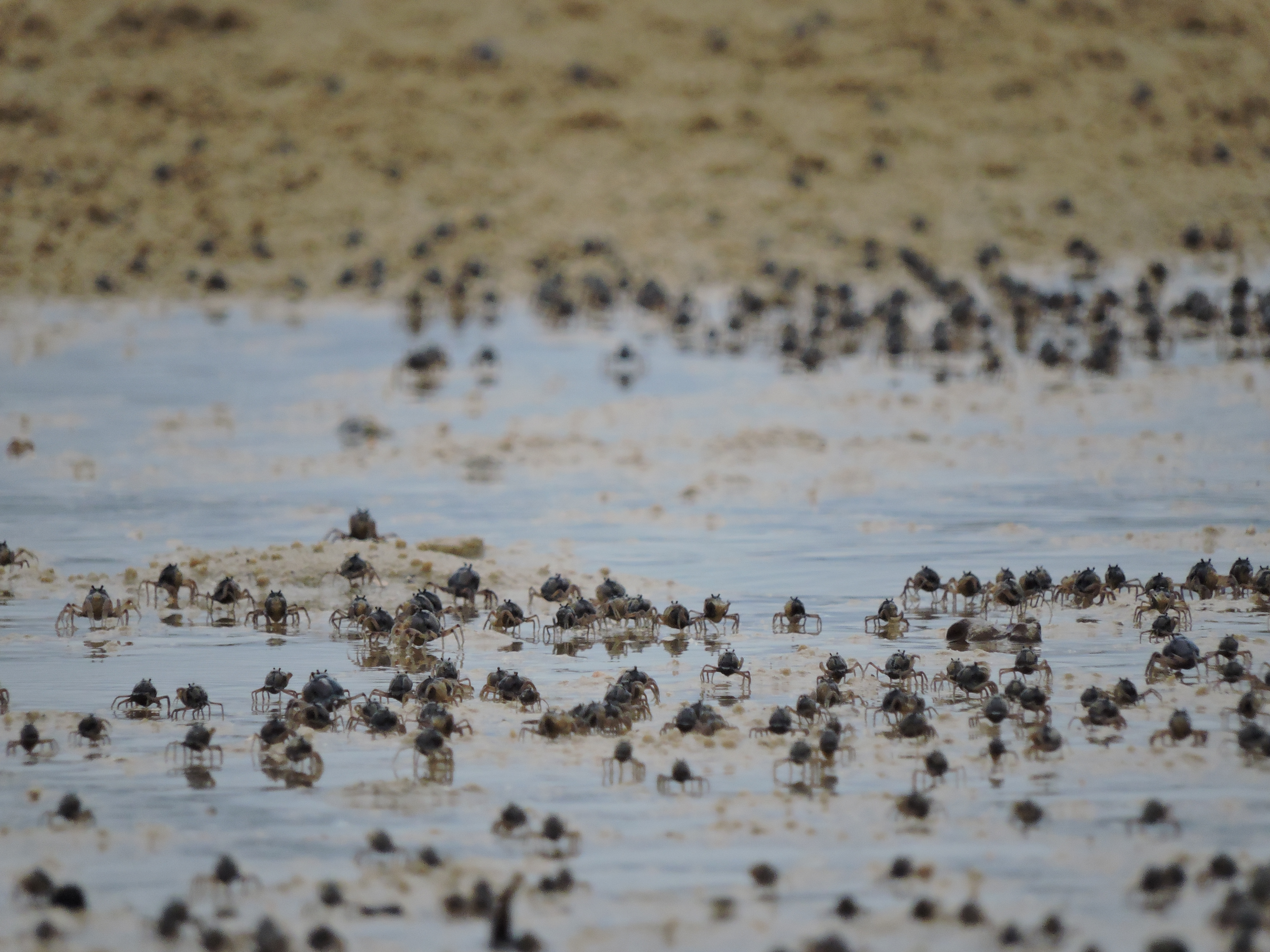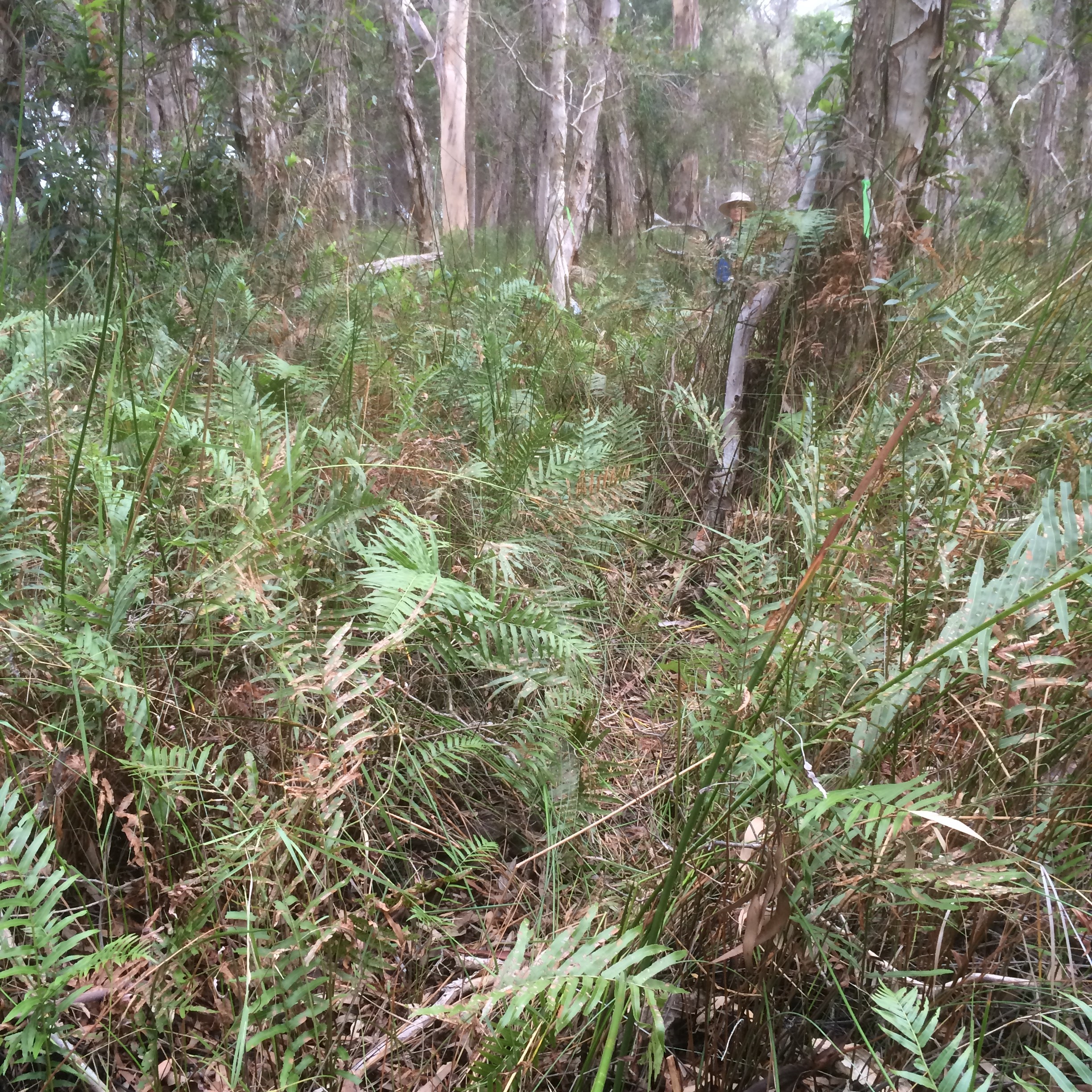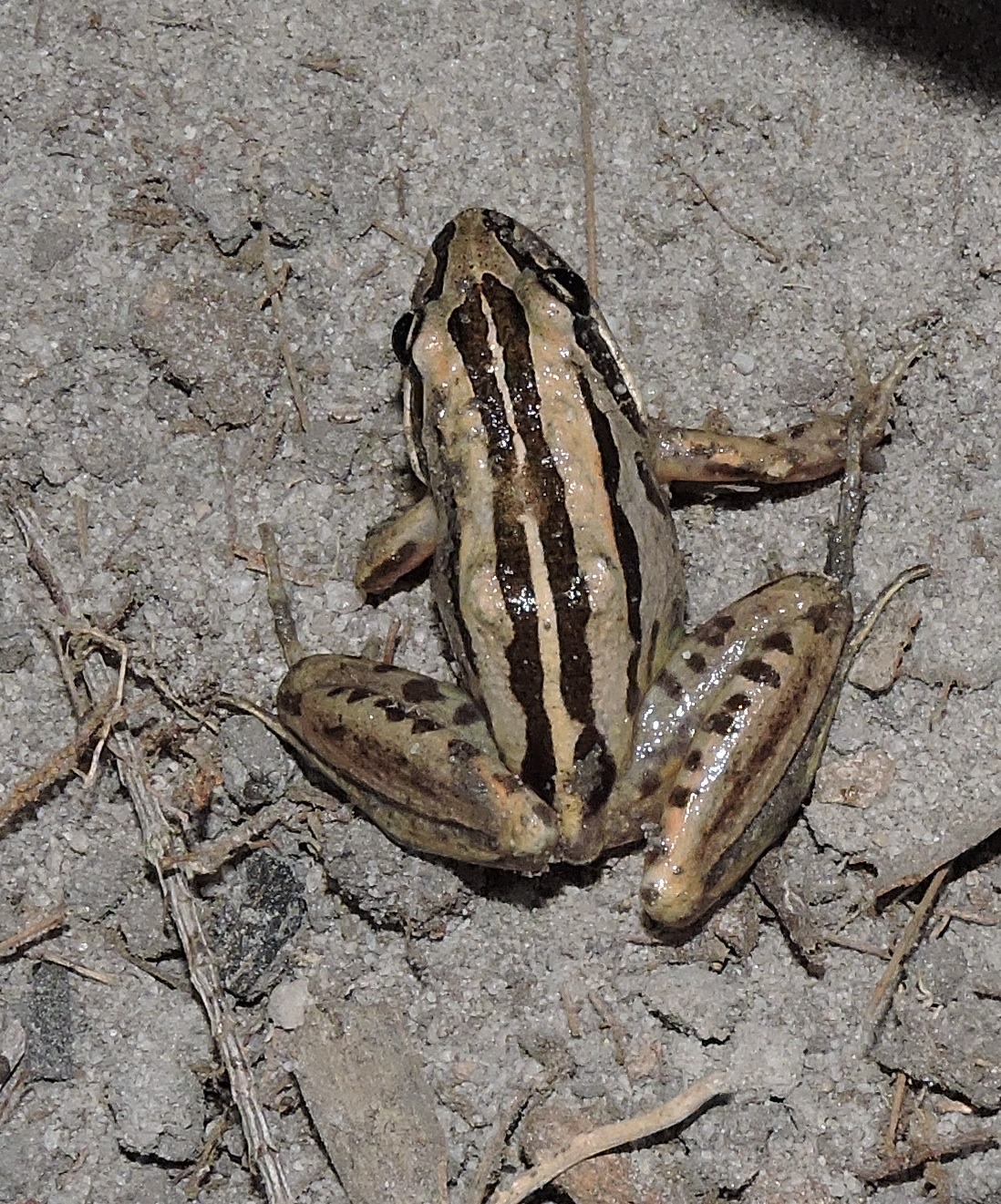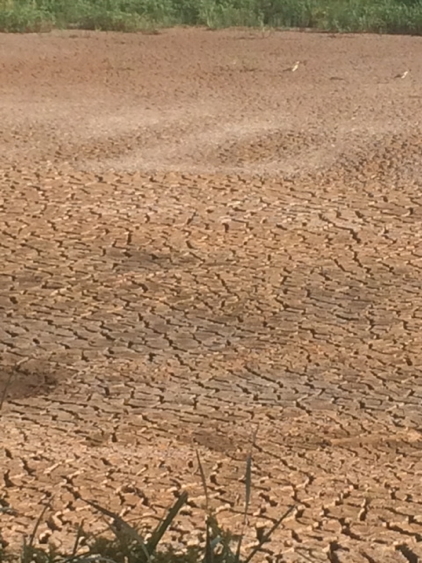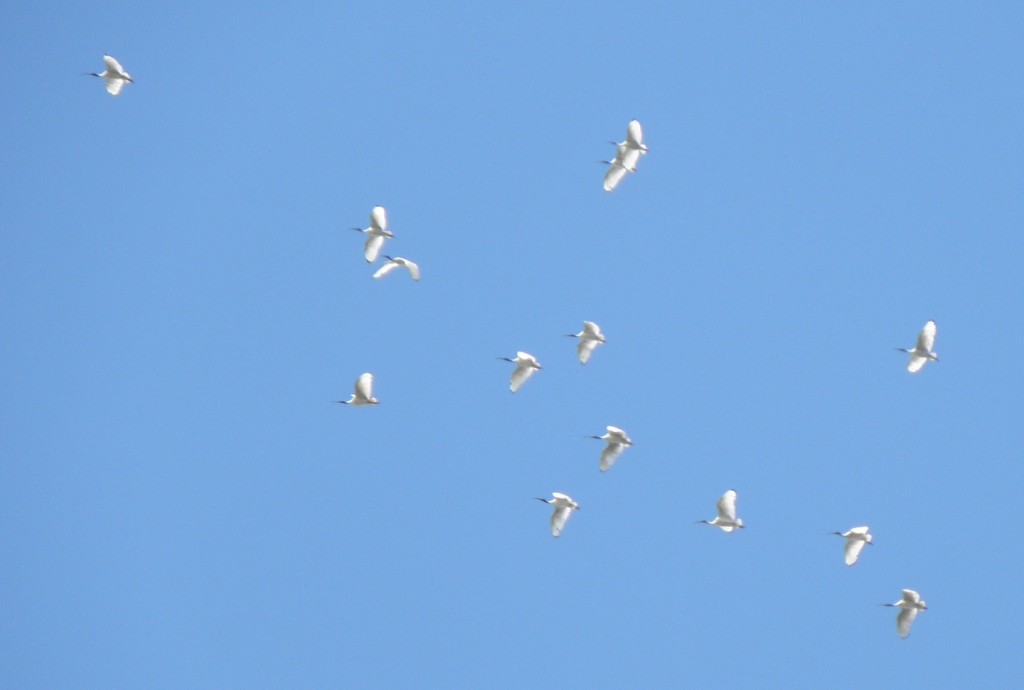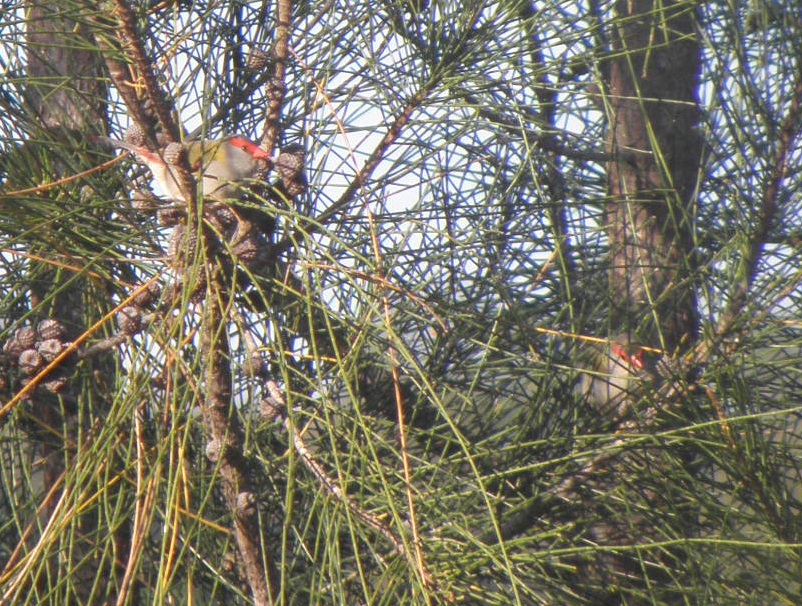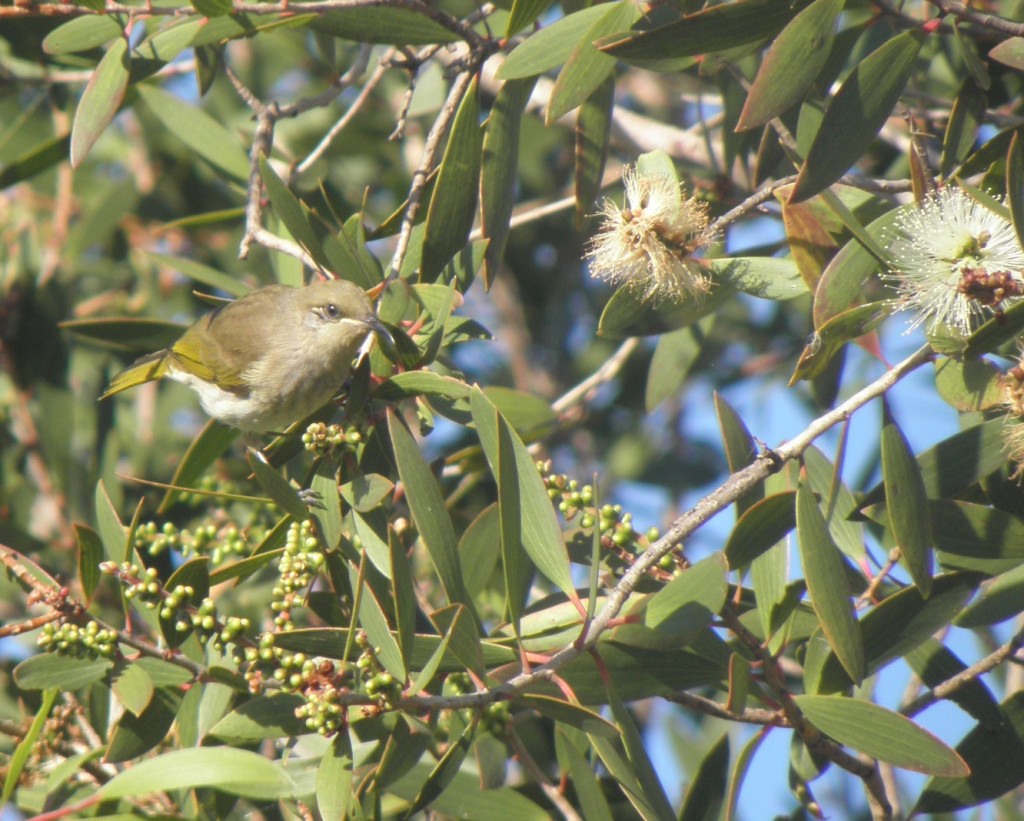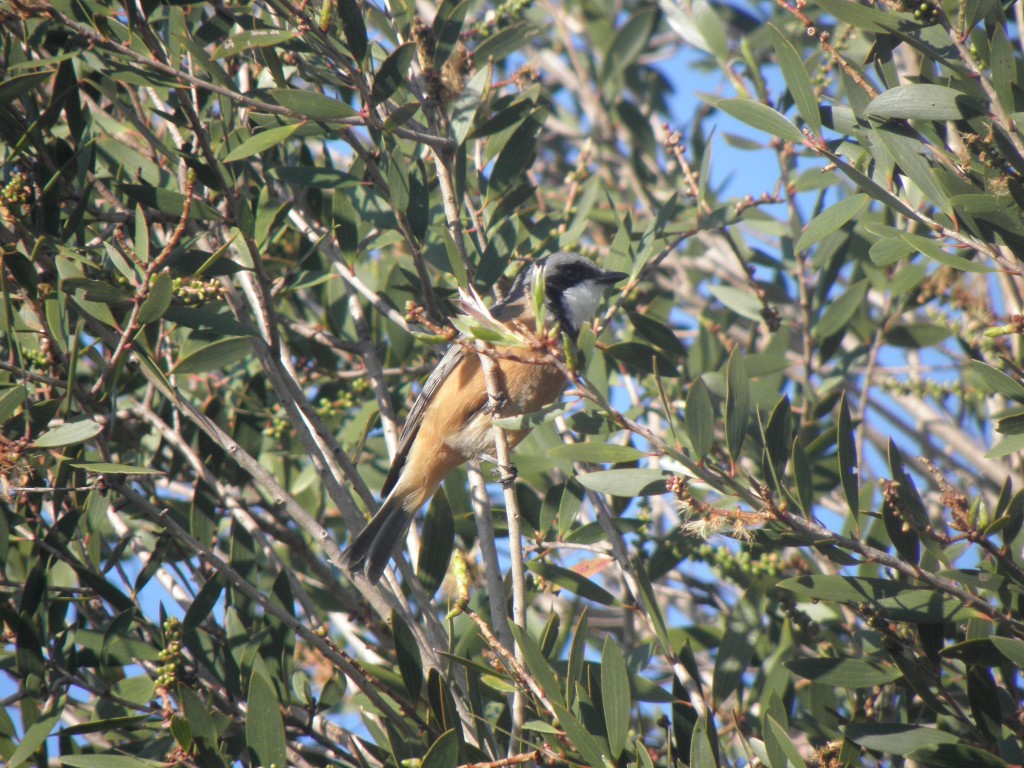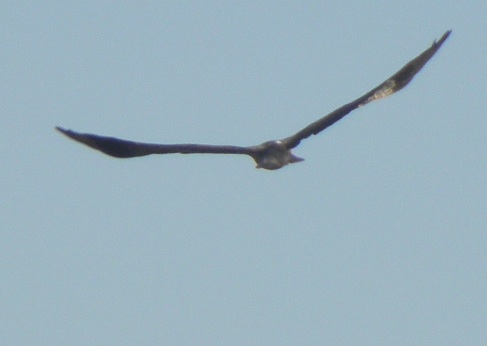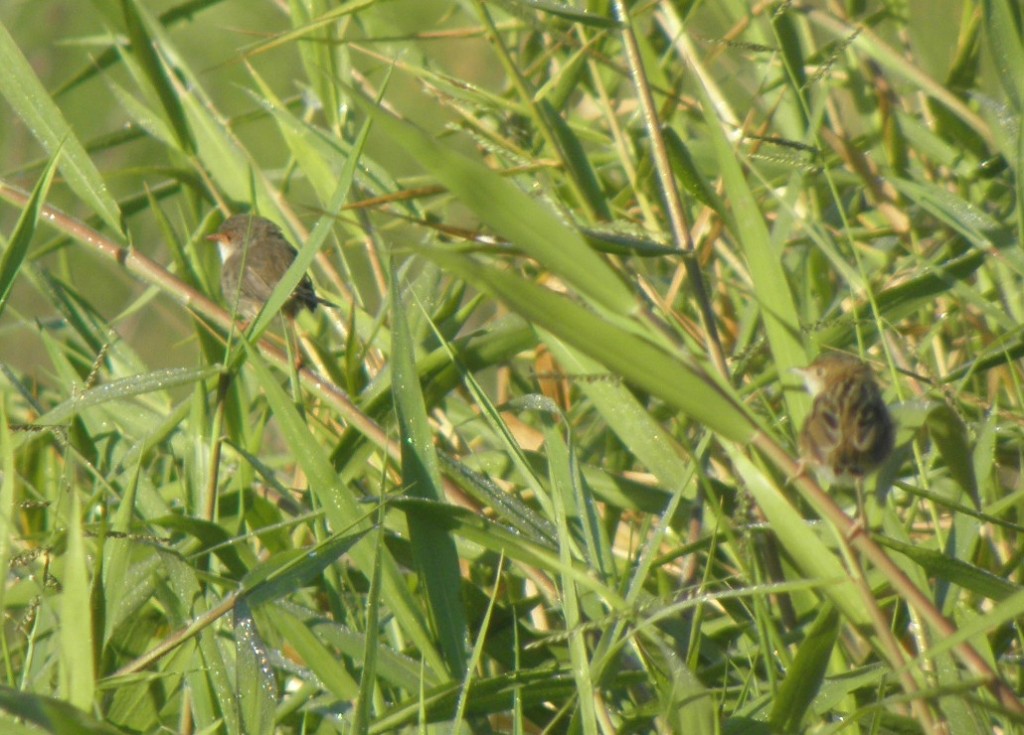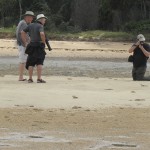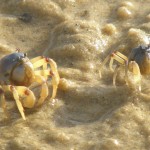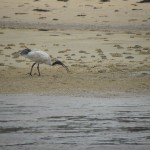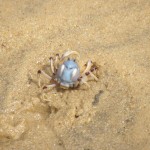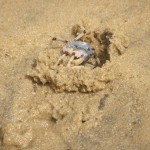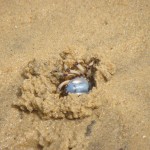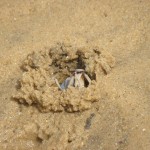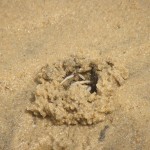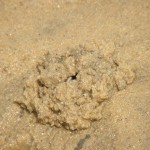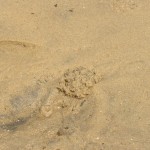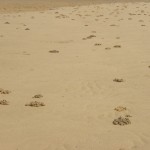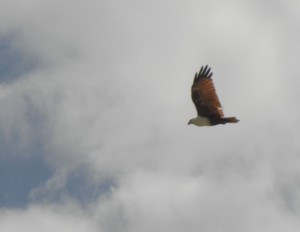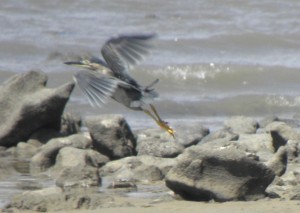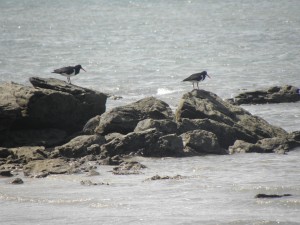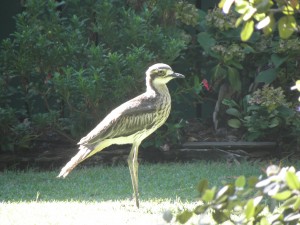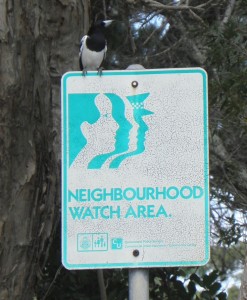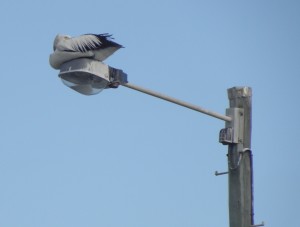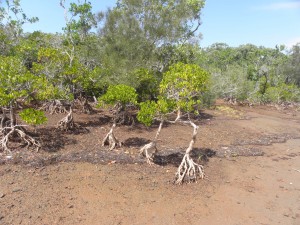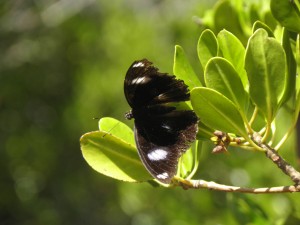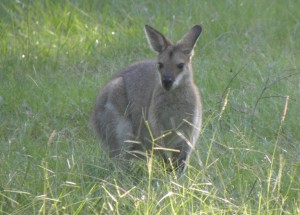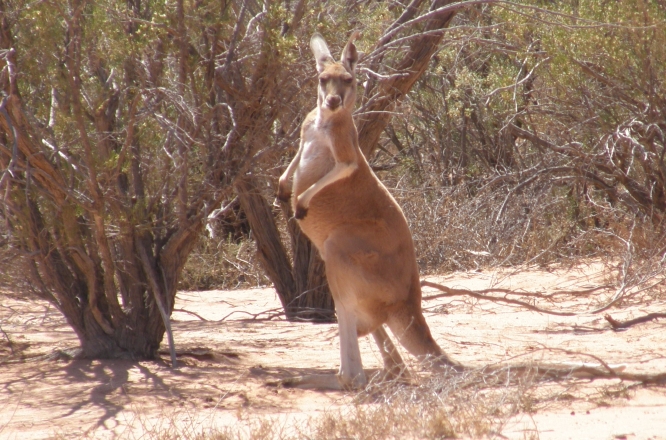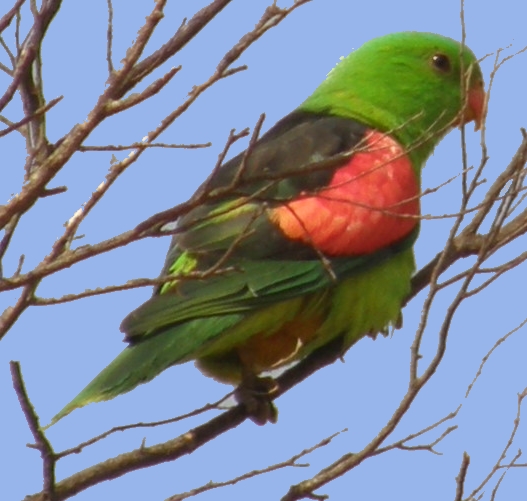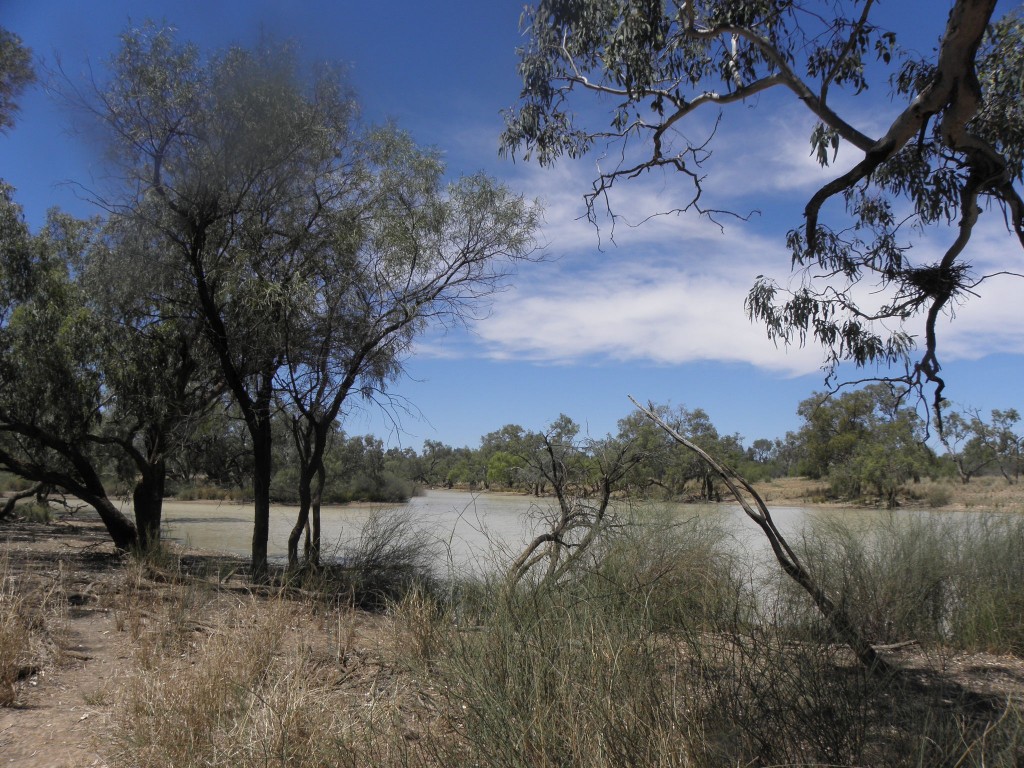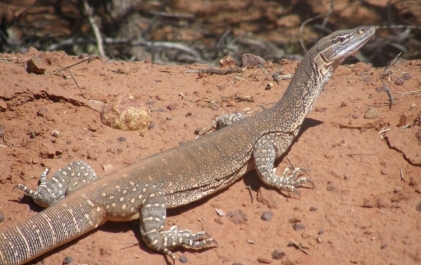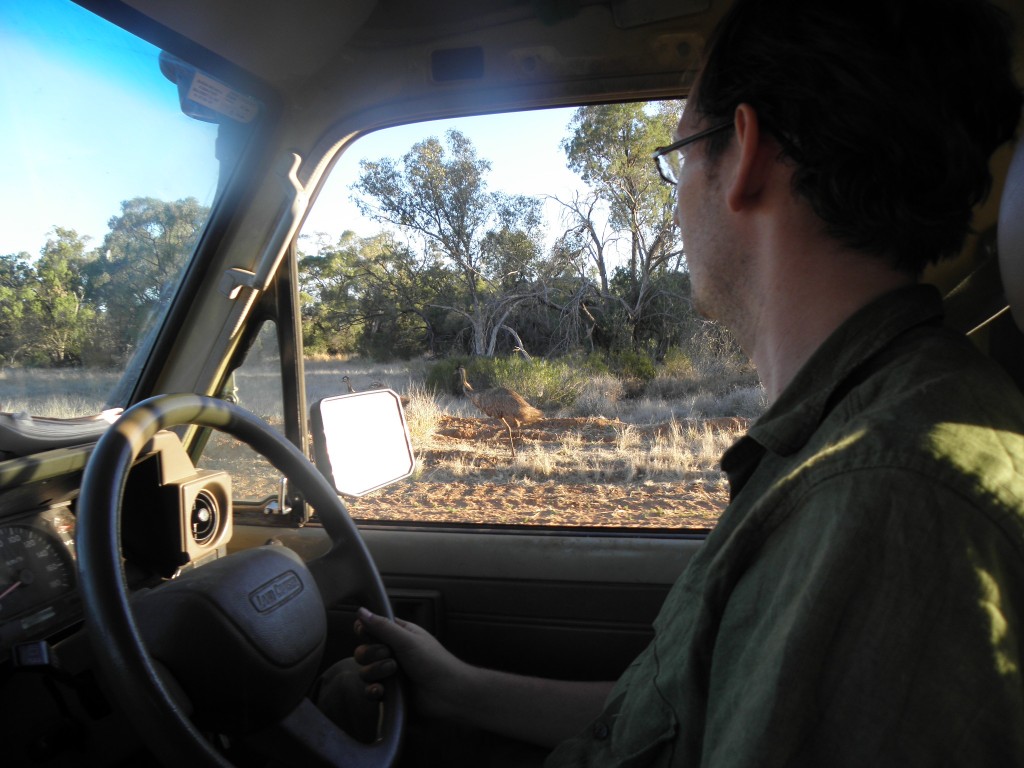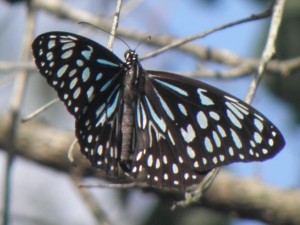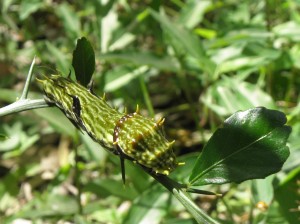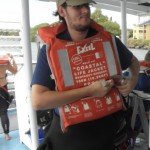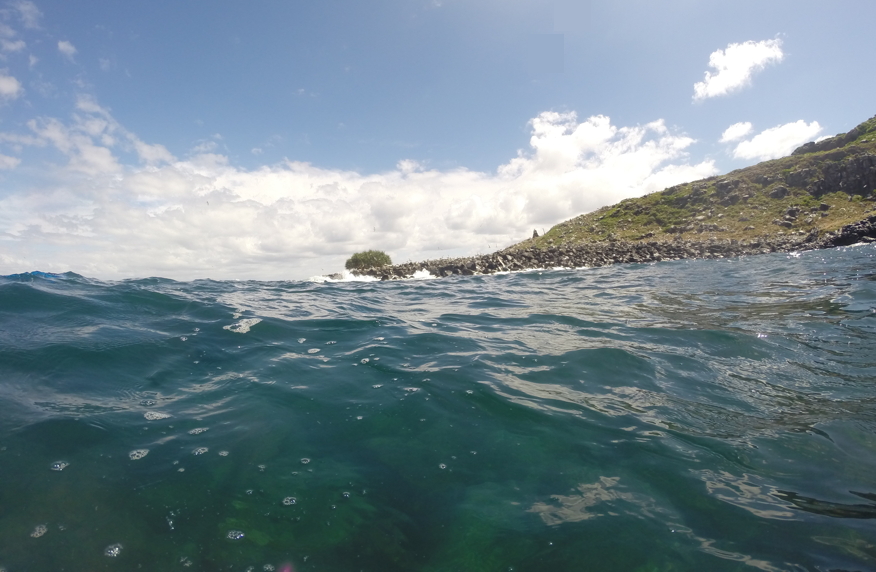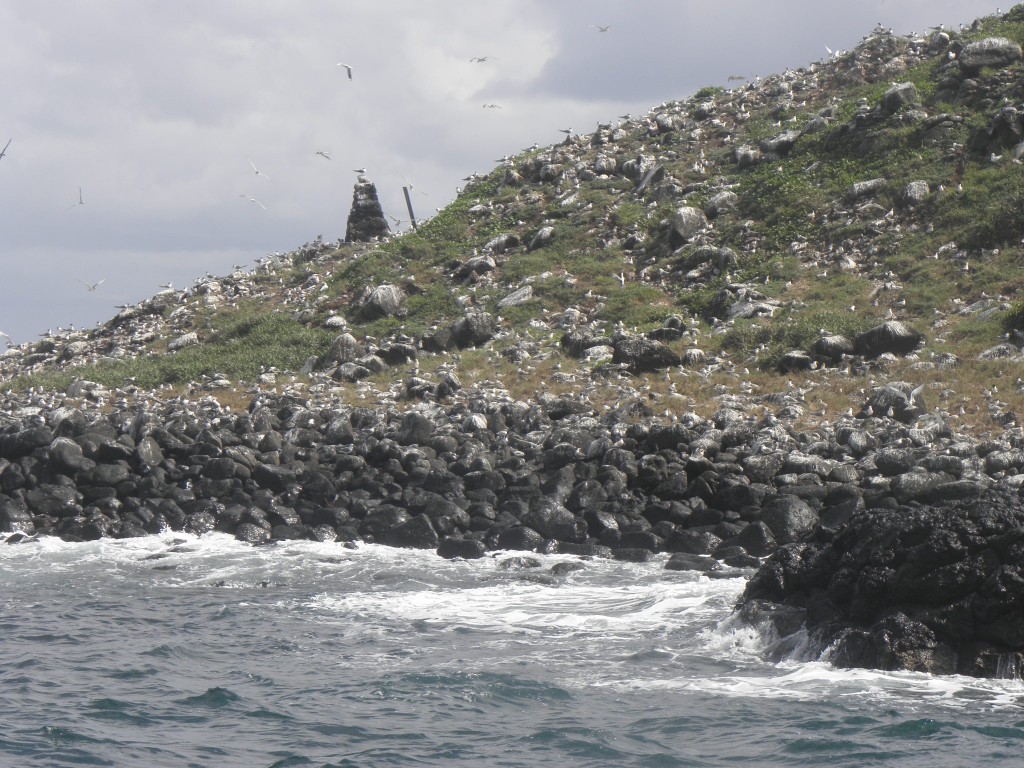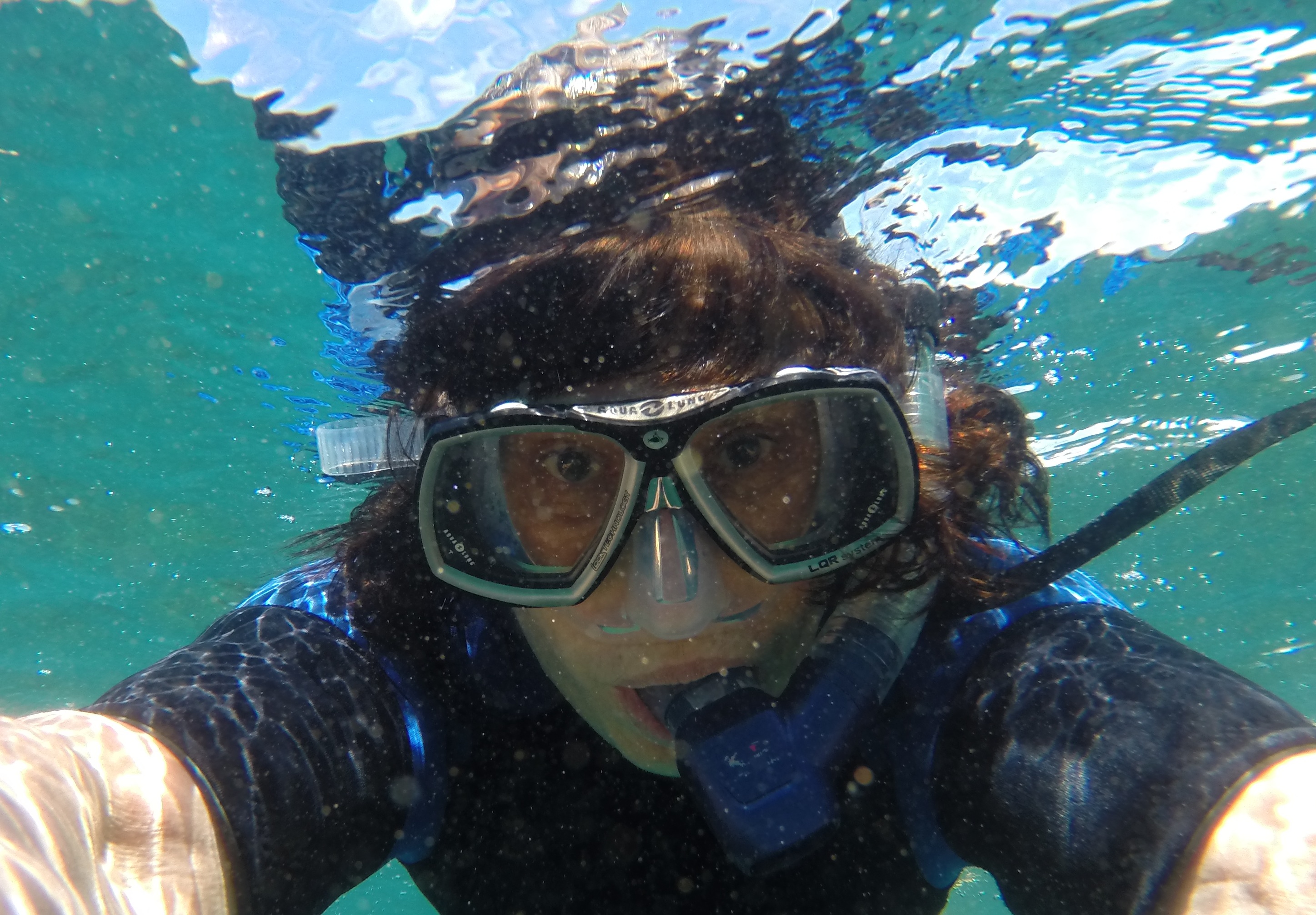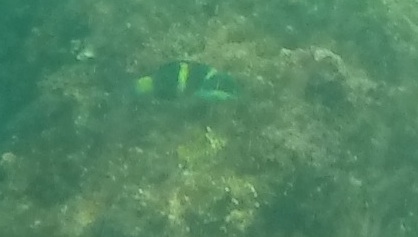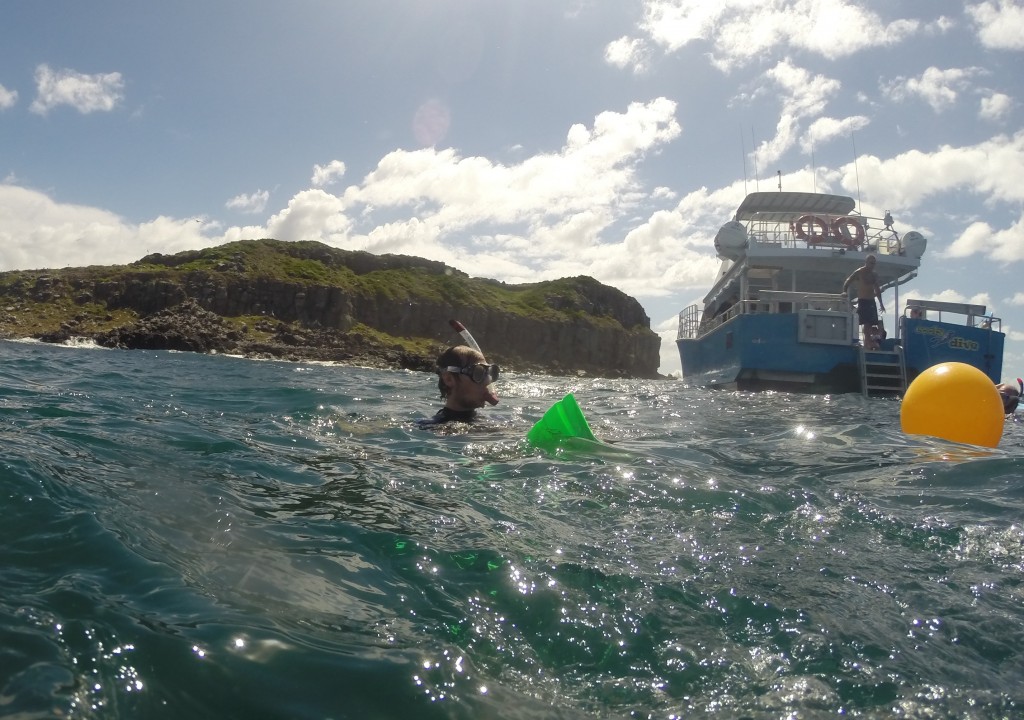We have led many day tours to this lovely little island, but that way we miss out on the charming sunsets, sunrises and early morning birding. There is now the possibility of staying overnight in comfortable cabins near a picturesque beach and a walking track through the coastal woodland.
Unlike some other islands nearby, the shores are protected by the “Emerald Fringe” of native woodlands. – no high-rise buildings or indeed any buildings coming right to the beach (and there are no high-rise buildings anywhere on there island). The Coochiemudlo Island Coastcare group work hard to keep introduced weeds under control and to prevent foreshore erosion.
If you’ve never seen a bush stone-curlew and would like to, you shouldn’t have much trouble finding them here. They have an unforgettable stare with those big yellow eyes, and there’s plenty wandering around the island, sometimes with chicks following.
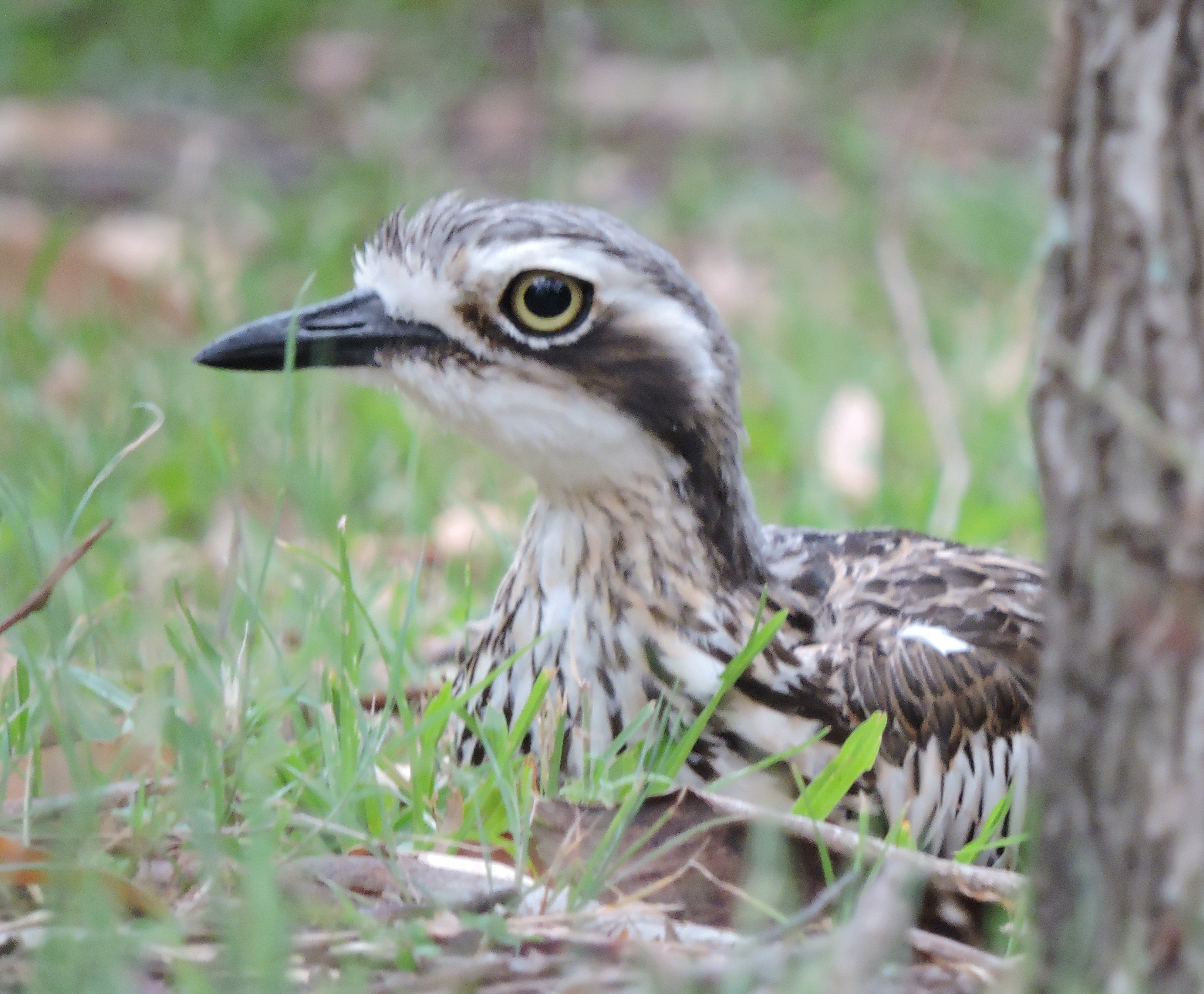 There are plenty of bush stone-curlews wandering around the island, and their weird, wild calls at night add to the atmosphere.
There are plenty of bush stone-curlews wandering around the island, and their weird, wild calls at night add to the atmosphere.
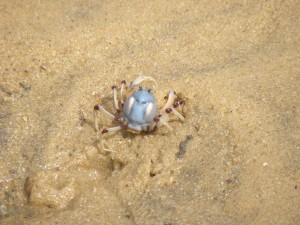 As the tide recedes we see hundreds, sometimes thousands, of blue soldier crabs marching across the beach. If you go too close you’ll startle them and they quickly bury themselves in the sand, but if you then stay still and quiet for a few minutes they’ll slowly re-emerge.
As the tide recedes we see hundreds, sometimes thousands, of blue soldier crabs marching across the beach. If you go too close you’ll startle them and they quickly bury themselves in the sand, but if you then stay still and quiet for a few minutes they’ll slowly re-emerge.
Meals can be at the cabins, picnics on the beach, or the Red Rock Cafe, with fresh seafood and many other options.
The name “Coochiemudlo” refers to the red rock from these cliffs (below) that were important to the local Aborigines, who used them for painting their bodies for ceremonies and trading for other goods far inland on the mainland.
Quiet beaches beckon. We often have these to ourselves even during the day, but even. more so by staying overnight and walking early in the morning or late afternoon.
Several mangrove species grow along some shores. These ones almost look as though if we turn away they’ll start approaching us like Triffids.
Getting up early on the island allows for good birding experiences.
Walking along the beach at low tide reveals shells of many local molluscs and fragments of local coral.
Sea-grass – important for dugongs and green turtles – is sometimes also washed ashore
Staying overnight gives an opportunity to see fruit bats when they visit the island to feast on nectar in certain flowering seasons, and sometimes also frogs, frogmouths, owls and the intriguing (and harmless) net-casting spider.
There is also the delight of moonlit nights and wonderful sunrises
So, if you’d like to not only spend a day on this scenic little island so close to Brisbane but also stay overnight in a comfortable little cabin close to a quiet beach and a woodland trail, please let us know.





